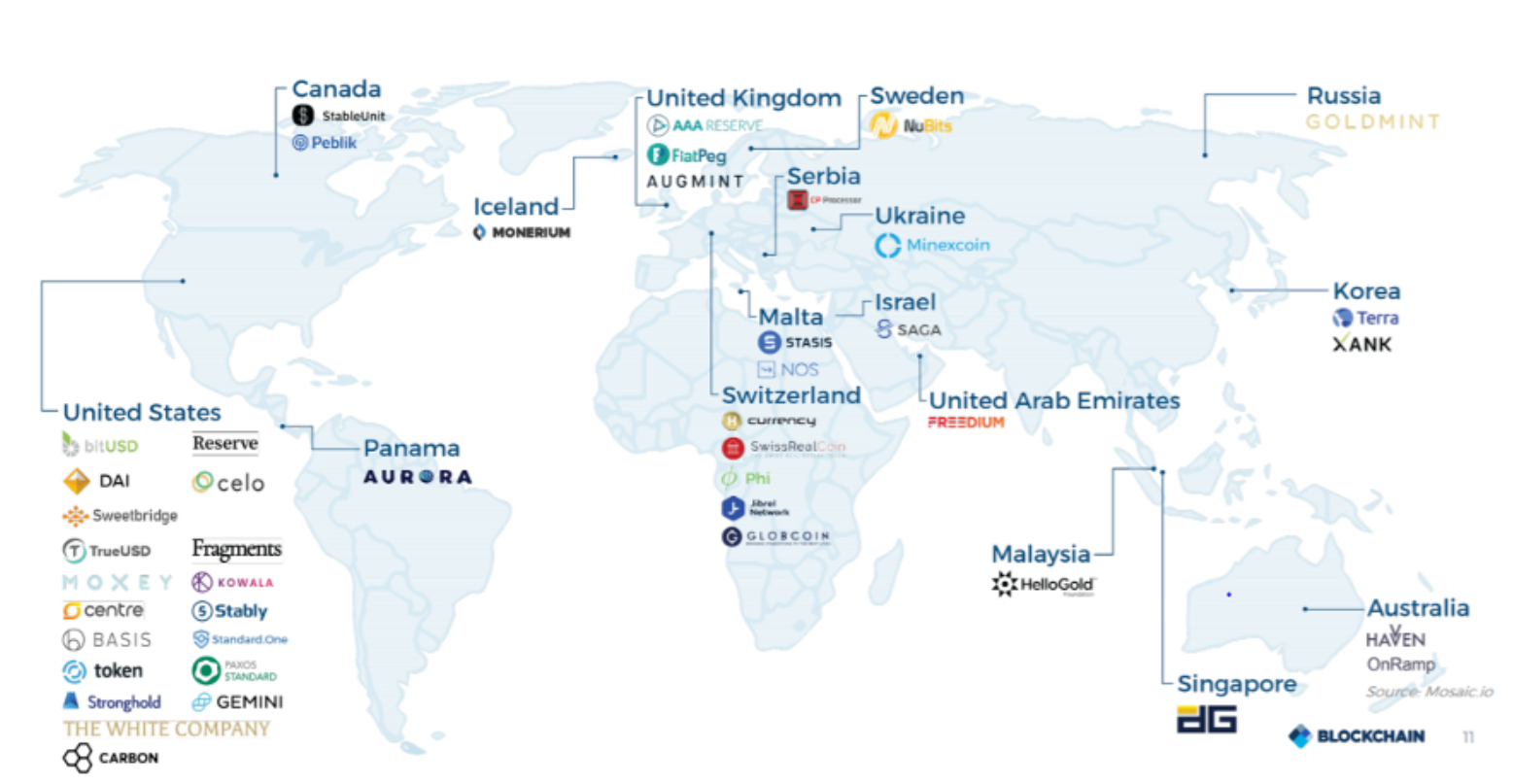Parallels to the Blockchain Industry

While none of these industries are directly comparable, if the development of these industries serves as any indication of the way in which the blockchain industry will develop, the industry will fragment into use case specific blockchains. As explained in greater detail below, meaningful value will accrue to the companies that can create a way for fragmented blockchains to communicate and connect (ie. “aggregators”.)
Phase 0: The blockchain industry began with two dominant platforms, Bitcoin and then Ethereum.
Phase 1: We are now seeing a fragmentation of the ecosystem to meet the needs of specialized use cases, which should continue at least until the trade-off between decentralization, privacy, and scalability is no longer required. Given the constraints imposed by this trilemma, it makes sense that different protocols would be needed to accommodate different use cases. It also probably doesn’t make much sense to expect the same platform to support a country’s digital identity system while also supporting applications such as CryptoKitties. The reasoning extends beyond scalability issues. As highlighted by Cosmos, “ Much like communities, companies and nation-states, each existing cryptocurrency is born with the seed of some cultural ideal.” In order for these companies to express those ideals, they will create protocols that grant them the flexibility to do so. From all lenses, it looks unlikely that there will be “one blockchain to rule them all.”
Phase 2: As rigid processes and closed systems are “unbundled”, wider spread usage and adoption will occur across these multiple blockchains. This will increase friction and transaction costs for consumers. As the number of blockchains increases, so does the complexity of managing a number of different tokens and assets siloed within disparate ecosystems that have no way to communicate or connect.
Phase 3: Companies that can create common standards or mechanisms for interoperability and / or connectivity between blockchains will occupy a central role in industry development (more below.) There are many projects currently working on becoming this “aggregator” or “Internet of Blockchains” including Cosmos , Polkadot, and FourthState Labs.
The idea of interoperability in the blockchain industry is not new. However, looking at other industry evolutions makes it seem clear that the blockchain industry will continue to fragment into specialized blockchains and that as this happens, value will accrue to the platforms that facilitate interoperability, communication, and connectivity between chains.
Network Effects in the Industry

As the blockchain industry fragments, new entrants will need to offer defensibly differentiated value propositions if they are to disrupt established network effects. An “aggregator” or connectivity mechanism will be crucial to further development of the industry. Let’s now look at several industries where multiple networks have had to compete and co-exist side by side.
E-commerce and Social Networks
While Amazon and Google are perhaps the two platforms which best exemplify network effects, they have also both failed at incentivizing users to join new networks at one time or another. Amazon was not initially successful in its attempts (Amazon Auctions, zShops) to compete with eBay. Amazon failed at competing with eBay (selling used goods) until it realized that it couldn’t compete by trying to be “ a better eBay.” With the introduction of the Single Detail Page, which gave Amazon customers the option to view new or used versions of a product, the company began targeting Amazon’s own customers instead of eBay’s. This then offered eBay sellers a more compelling value proposition to join Amazon’s network as it opened up a new market to them (Amazon’s customers.) This was enough to start the flywheel needed to develop a network of both buyers and sellers.
Prior attempts failed because they tried to create a marginally better, copy-cat network. This requires all network participants (buyers and sellers) to overcome the “
gravitational inertia”of their current network and move to a new network together as the value of an incremental feature will never offset the magnitude of switching costs for an individual user.
Google+ also failed with its attempt at a “me too” social network. Again, this effort failed because it wasn’t defensibly different from other, more established social networks (Facebook.) It’s much easier for an established network to copy a competitor’s new feature than for a new entrant to create network effects from scratch.

While there are valid reasons for creating specialized protocols to accommodate differing use cases, blockchain platforms that focus on making marginal improvements over existing networks are unlikely to succeed. Instead, new networks must offer a value proposition compelling enough to justify switching and unique enough that competitors can’t easily replicate it.
One exception to this rule is if a player is willing to add a feature that the incumbent is not willing to add. This is how TaoBao beat the already established eBay in China. TaoBao introduced direct messaging between buyers and sellers, which eBay wanted to avoid since side channel communication between buyers and sellers increased the likelihood that transactions would be conducted outside the eBay platform. eBay would then forego the associated transaction fees.
Blockchain networks are doing exactly this, adding features (trust, transparency, immutability, and direct P2P interaction) that the incumbent platforms are unwilling to add.
While new blockchain networks will have to offer strong value propositions in order to compete with established blockchains, blockchain networks in general should be able to beat out traditional networks.
***This section summarizes and expands upon the ideas of former Amazon and Google engineer, Steve Yegge.***
Telecom

Once the industry has fragmented, these disparate networks will need to communicate with each other. The telecom industry is a prime example of an industry that requires the bridging of networks.
Due to capital and regulatory constraints, it is not feasible to build a global telecommunications network. Therefore, cross-country communication often requires cooperation among carriers. Sometimes this occurs in the form of roaming agreements. Other times it has required agreement upon global standards. Pre- 4G LTE, Europe operated according to GSM standards while some U.S. carriers (Verizon and Sprint) operated according to non-compatible CDMA standards. Without compatibility, a Verizon customer traveling in Europe wasn’t able to use their phone while overseas. This obviously created a high level of friction for consumers. Telco companies again realized that they had to work together to develop a mechanism to allow consumers to hop from one network to another more seamlessly while moving outside a given carrier’s coverage zone. The 4G-LTE global standards were designed and expected by all major carriers with this in mind.
Issues with compatibility across geographic networks can be compared to managing multiple native tokens across multiple blockchain ecosystems that can’t easily communicate with each other. This currently requires conversion into other currencies via an exchange (sometimes multiple times) before being able to use assets in another ecosystem.
Like the telecom industry, the blockchain industry is a network of networks and will need to continue to set standards aimed at facilitating more seamless communication between these networks.
Telecom is also a highly regulated industry and differences in regional regulations have caused the industry to develop very differently in different geographies. For example, the European Telecom industry is much more competitive (harsher anti-trust enforcement) than its U.S. counterpart, with +10 different major carriers relative to ~3–4 in the U.S. In the U.S., operators tend to lease cell towers from third-parties while a higher percentage of European operators still own their tower infrastructure. In other words, regulatory and regional differences have created a less restrictive operating environment for U.S. telcos relative to their European counterparts. As the blockchain industry fragments, regional regulations and adoption patterns may heavily influence which projects succeed.

Networking Infrastructure
The mechanism by which these networks connect to and communicate with each other is of central importance to an industry. Comparison with the networking infrastructure industry illustrates this point clearly.
With the advent of cloud computing, enterprises have shifted from on-premise data centers to third-party colocation facilities. These third-party facilities have traditionally been divided into two models: wholesale, custom built dedicated facilities also called “server farms,” and retail facilities that focus on interconnection via direct fiber cross connections between customers. These retail focused companies have created a neutral, third-party location for companies to directly connect to each other, to peer or exchange traffic and /or data securely and rapidly.
The infrastructure providers that have built their business on being a facilitator of connectivity between disparate enterprises, ISPs, and telcos have accrued the most industry value, historically trading at a ~4x premium to their wholesale peers. Much of this premium is related to the network effects created by facilitating communication between transacting parties within a densely interconnected data center.
The parallel with the networking infrastructure industry perhaps best underscores the need for connectivity between chains and / or side chains and underscores the value of platforms that allow for cross network communication and connectivity. This is the value of an “aggregator.” This is the value of interoperability.
Leave a Reply